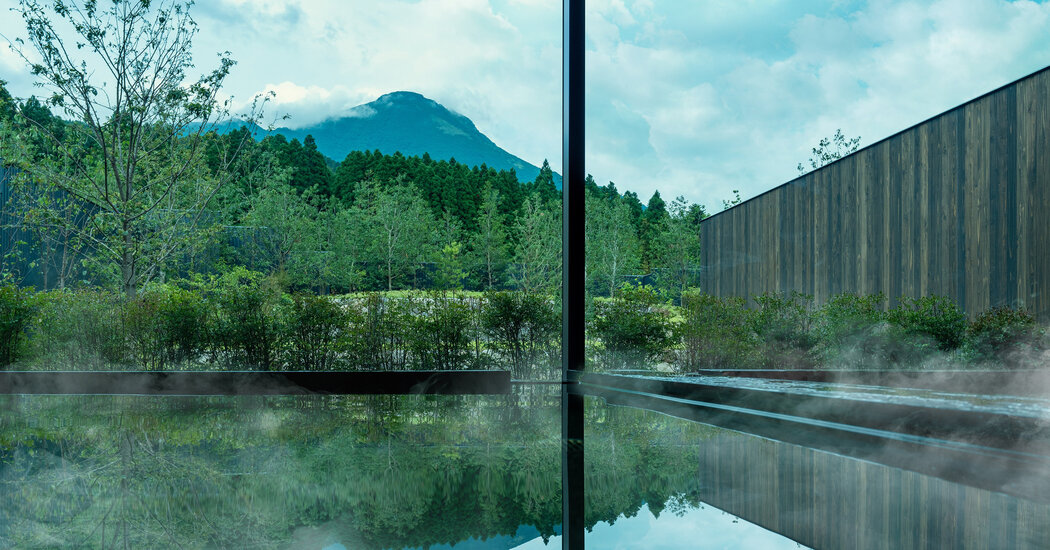In the ever-expanding wellness world, one of the latest trends is actually one of the oldest: soaking in, and sometimes drinking, therapeutic waters. In ancient Greece, physicians, including Hippocrates, prescribed mineral-rich baths to treat everything from skin diseases to insomnia. (According to one theory, the word “spa” is an acronym of the Latin phrase “sanus per aqua,” meaning “health by water.”) The practice has also been employed in Asia since at least the sixth century A.D., when nomadic Buddhists are said to have brought the concept of onsen (inns and bathhouses built around natural geothermal pools) to Japan from the Korean Peninsula. Now, with various forms of hydrotherapy, such as cold plunges and steam saunas, making a comeback, wellness entrepreneurs are debuting properties centered on bathing. Here, five places to take a dip.
When the husband-and-wife hospitality entrepreneurs Sharan Pasricha and Eiesha Bharti Pasricha were researching their latest project, the recently opened members’ club and country retreat Estelle Manor in Oxfordshire, England, they discovered that the North Leigh Roman Villa, which includes the ruins of a first- or second-century bathhouse, were just down the road from the 85-acre property. “We realized that we should create a bathhouse as opposed to just a spa, and that we wanted to go back to the history of the estate and bring it into the modern day,” says Sharan. To that end, in March the couple launched Eynsham Baths in a 3,000-square-foot neo-Classical-style building with stone columns and hand-shaped bricks. The centerpiece is a vast tepidarium (a heated room in a Roman-style bath) with five thermal pools, a lounge and 10 treatment rooms. “I’m a big believer in water being a natural medicine for the body,” says Sharan. “The benefits of bathing are incredible.”
In the 16th century, Michelangelo, who suffered from kidney stones, traveled from Rome to the village of Fiuggi, Italy (a journey that takes about an hour by train today), where the natural mineral waters were thought to alleviate pain from urinary illnesses. For centuries, popes and nobles had come to the town seeking “the cure,” which the artist supposedly described as “the water that breaks the stone.” At Palazzo Fiuggi, a luxurious health retreat with 102 rooms and suites that opened in an Art Deco-style villa in 2021, many visitors still drink those waters — which some believe are enriched by passing beneath…
Click Here to Read the Full Original Article at NYT > Travel…
